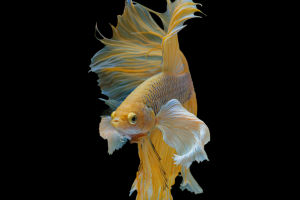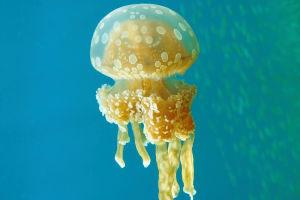The pelican, with its distinct silhouette and massive bill, is one of nature’s most captivating birds. Whether gracefully soaring through the sky or skimming the water’s surface in search of fish, pelicans are a marvel of the avian world.
Found across the globe, particularly in coastal regions, these large water birds are known for their impressive fishing abilities, unique flight patterns, and fascinating social structures. Let's explore the world of pelicans and uncover what makes them so remarkable.
Pelicans: A Snapshot of Their Characteristics
Pelicans belong to the family Pelecanidae and are easily recognized by their large bills and a pouch that hangs beneath. This pouch called a gular pouch, serves as their primary tool for catching fish, often leading to their characteristic dive-bombing into the water. Despite their size—some pelicans have wingspans reaching up to 11 feet—they are graceful in flight, thanks to their broad wings.
Pelicans are incredibly social birds, often living in large colonies and working together during feeding and breeding. Some species, like the American white pelican, are known for their synchronized hunting tactics, where groups work together to herd fish into shallow waters for easier catching.
The Art of Fishing: How Pelicans Hunt
One of the most striking features of pelicans is their unique hunting strategy. While many birds of prey rely on speed or talons, pelicans use their giant bills and gular pouches to scoop up fish from the water.
Dive-bombing pelicans: Some species, like the brown pelican, are known for their dramatic plunge-dives from heights of up to 60 feet. They dive headfirst into the water, using their massive beaks to scoop up fish along with water. After surfacing, they drain the water from their pouches and swallow their catch whole. This dive-bombing technique is not only thrilling to watch but is also incredibly efficient.
Cooperative hunting: Not all pelicans dive for their food. Some species, like the American white pelican, are known for their cooperative hunting methods. Instead of diving, they use a strategy where several pelicans form a circle and drive fish into shallower waters. This teamwork allows them to capture fish more easily, showcasing their intelligence and social skills.
PELICANS DIVE BOMBING FOR FISH
Video by smilingzebras
The Unique Flight of Pelicans
Pelicans are masters of gliding. Despite their size and weight, pelicans are excellent flyers, often seen soaring high in the sky or skimming low across the water. Their broad wings allow them to ride on thermals (rising columns of warm air), conserving energy as they glide effortlessly for long distances.
One of the most mesmerizing sights is watching pelicans perform their synchronized flying. Often flying in V-shaped formations, pelicans can travel vast distances, especially during migration periods. The lead pelican takes the brunt of the wind resistance, while the ones behind benefit from the reduced air pressure, allowing them to glide more easily. This cooperative flying strategy is similar to that of geese and demonstrates the pelican’s efficiency in energy conservation.
Conservation Status and Challenges
While pelicans are widespread, not all species are thriving. For example, the Dalmatian pelican and spot-billed pelican are considered vulnerable due to habitat loss and human activity. Pollution, particularly plastic waste and chemical runoff, has severely impacted the health of pelican populations, especially in coastal areas.
In addition to pollution, overfishing poses a threat to pelicans, as it depletes their primary food source. Conservation efforts are now in place to protect pelican habitats and ensure that these majestic birds continue to thrive for future generations.
Fun Pelican Facts You Didn’t Know
Oldest Fossil: Pelicans have been around for millions of years, with fossil evidence dating back at least 30 million years!
Efficient Flyers: Pelicans can fly at speeds of up to 40 mph, and they often cover large distances during migration.
Mating Displays: During the breeding season, some pelicans display bright-colored patches on their bills to attract mates.
Pelicans are truly fascinating creatures, combining power, grace, and intelligence in everything they do. From their synchronized flying and cooperative hunting to their impressive fishing techniques, pelicans embody some of the most awe-inspiring behaviors found in the bird world.
As we continue to protect their habitats and conserve their populations, we ensure that future generations can marvel at the beauty and brilliance of these remarkable birds. So next time you’re near the coast, look up—you might catch a glimpse of a pelican gliding through the sky, a master of the air and sea.


